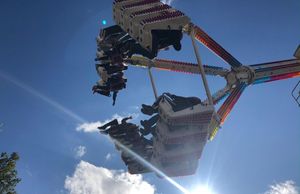An interview with an ASTM volunteer who keeps amusement parks safe.
Standards quietly subtend everything in the modern world - the food we eat, the electricity that courses through our homes - a whole world of documentation lies beneath the surface and mitigates the risks we don’t even consider we’re taking on. A key part of our social contract is the assumption that the built environment is safe. Standards, enforced by regulators, ensure that the contract is upheld.
Take, for example, an amusement park. Riding a roller coaster would go from a pleasant adrenaline rush to absolutely terrifying if we didn’t trust the car would roll into the station with all riders in place. Luckily, the ASTM Committee F24 on Amusement Rides and Device has you covered.
ASTM International’s vast offering of standards is developed by a legion of 32,000 volunteers who lend their expertise to technical committees. We spoke to Michael Viechweg, Level 1 Inspector for the National Association of Amusement Ride Safety Officers (NAARSO), voting member of ASTM International F24, and the former task group leader of the F24.61 Air Inflatable Amusement Devices Task Group, about how standards are developed and the safety procedures behind the scenes at amusement parks.
Hillary Predko: Can you describe what working as an engineer in the ride industry looks like?
Read the full story
The rest of this post is for paid members only. Sign up now to read the full post — and all of Scope of Work’s other paid posts.
Sign up now


